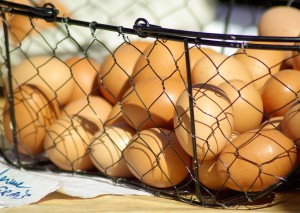 The first cake mixes to come out of a box were developed in the 1930’s. P. Duff and Sons applied for an “invention related to a dehydrated flour for use in making pastry products…” in December 1930.
The first cake mixes to come out of a box were developed in the 1930’s. P. Duff and Sons applied for an “invention related to a dehydrated flour for use in making pastry products…” in December 1930.
The cake mix incorporated a powder of wheat, molasses, sugar, shortening, salt, baking soda, powdered whole eggs, ginger, and cinnamon. All one needed was to add water, mix, and bake.
Fresh Eggs Preferred
After P. Duff and Sons had been tweaking the cake mix for several years, they encountered a major breakthrough in 1933 — a cake mix that required the chef to add fresh eggs. The new patent application stated, “The housewife and the purchasing public in general seem to prefer fresh eggs and hence the use of dried or powdered eggs is somewhat of a handicap from a psychological standpoint.”
It seems that housewives in the 1950’s preferred to add some of their own creativity into the mix.
Baking From Scratch?
More amazingly today, “In a survey, women always say they bake from scratch—but they mean they used a mix,” says culinary historian Laura Shapiro, author of Something from the Oven: Reinventing Dinner in 1950’s America. Cake mix companies had reinvented the meaning of baking “from scratch.”
But the reality to all of this was that, during the 1950’s, companies like Betty Crocker and Duncan Hines went from selling cake mixes to selling convenience; and marketing went from promoting features to developing benefits — the advent of consumerism.
